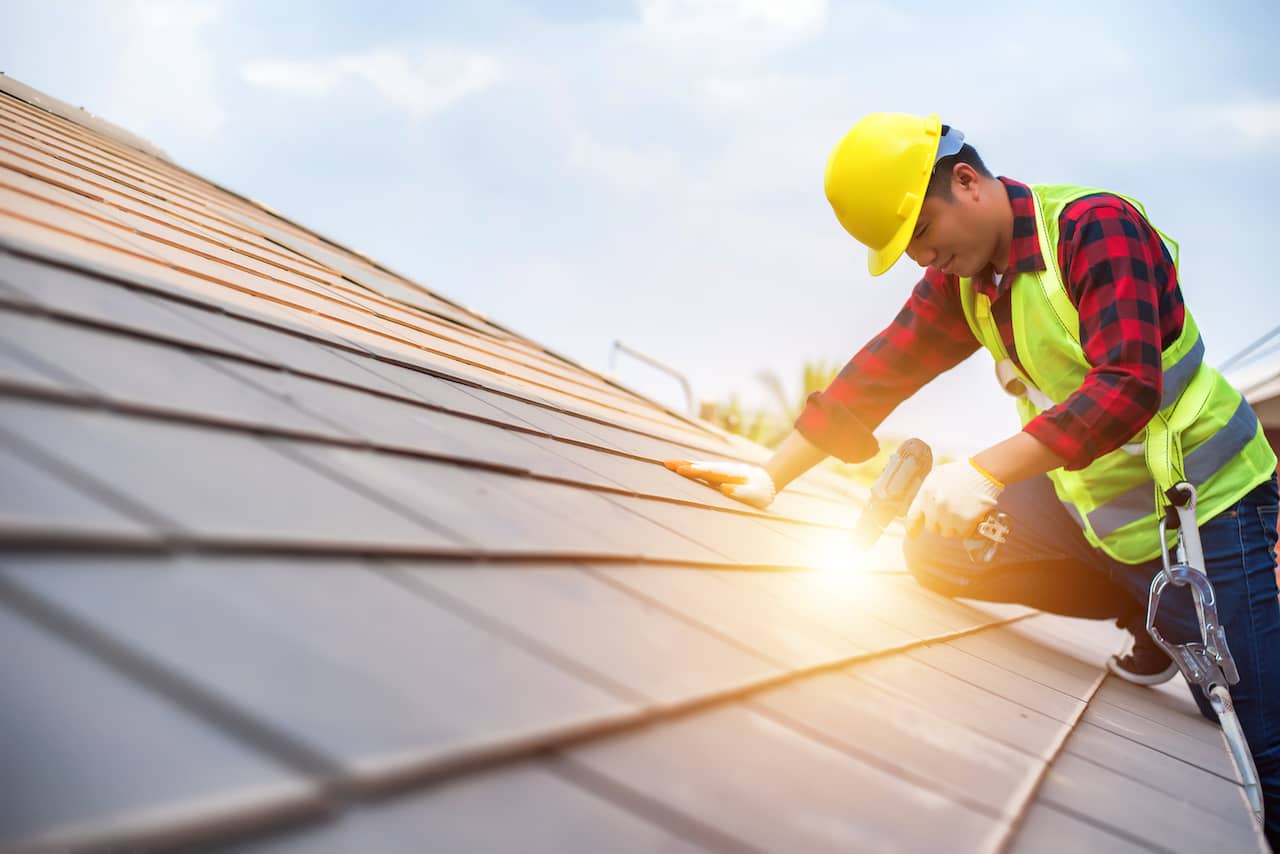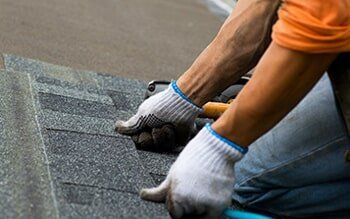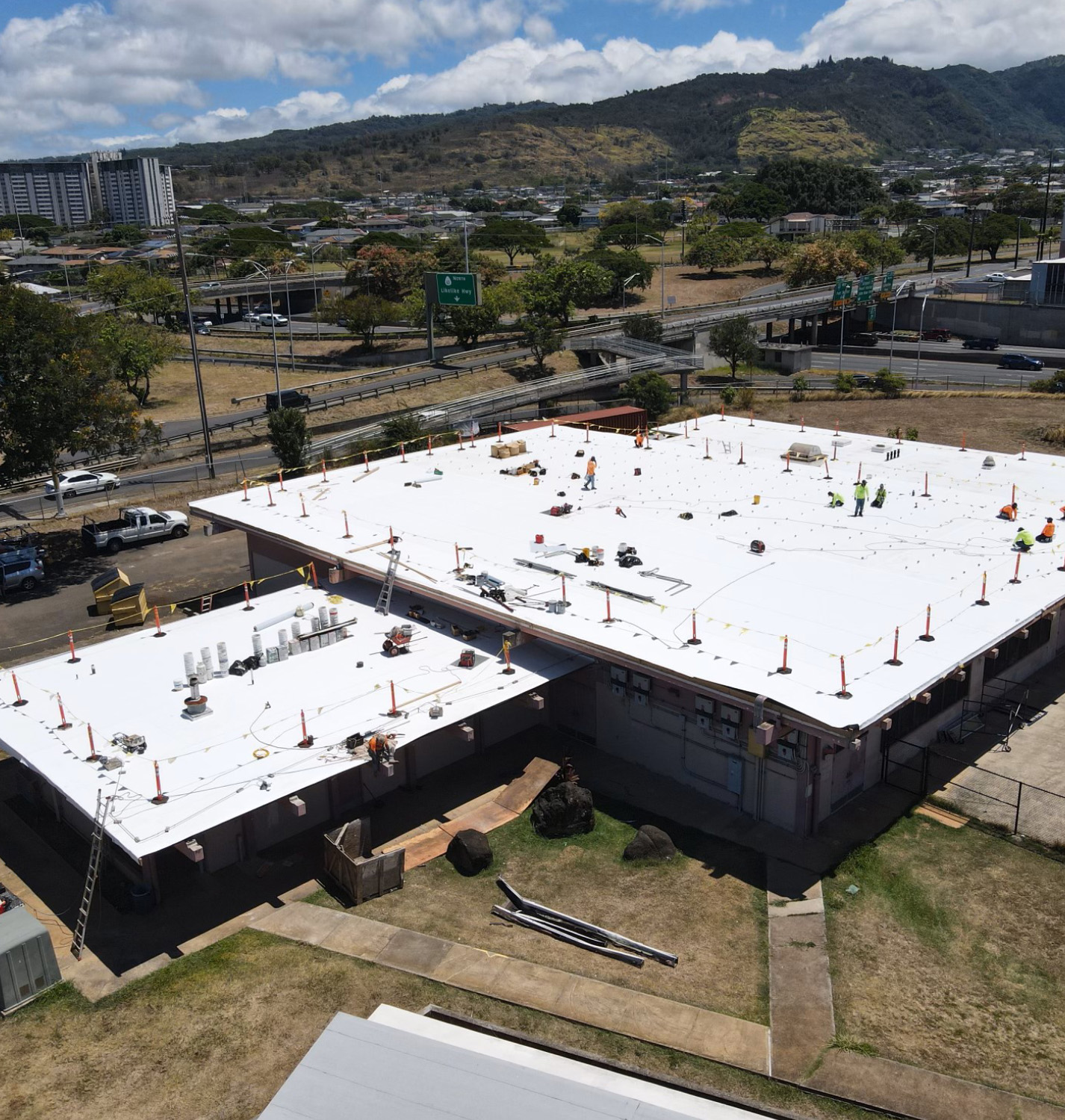A Business Owner’s Guide to commercial roofing honolulu
The Ultimate Checklist for Roofing System Install: Making Sure Quality and Resilience
The procedure of mounting a roof covering calls for mindful attention to detail. A detailed list can aid assure quality and resilience throughout the job. From reviewing the existing roof condition to selecting the appropriate products, each step is necessary. Correct prep work and tools play an important duty in attaining a successful installation. Nonetheless, lots of neglect the relevance of last examinations and ongoing maintenance. Recognizing these components can substantially impact the durability of a new roof.
Examining Your Present Roof Condition
Exactly how can one successfully figure out the condition of their existing roofing? An extensive assessment is vital for reviewing a roof's stability. House owners must begin by examining the roof from the ground, searching for noticeable indications of wear such as missing tiles, drooping areas, or discoloration. Closer examination can be done by accessing the roof covering itself, where one ought to look for cracked or crinkled shingles and inspect flashing around vents and chimneys.Additionally, the inside of the home warrants attention; water stains or mold and mildew development on ceilings and wall surfaces might show leakages. Attic inspections can disclose potential problems, such as poor air flow or signs of moisture.Regular analyses, ideally two times a year, can aid recognize problems early and avoid pricey repairs. By recognizing the roofing's current state, home owners can make educated decisions around needed upkeep or replacements.
Picking the Right Roofing Products
When choosing roofing products, what aspects should house owners consider to ensure a resilient and reliable choice? First, the environment plays a significant role; materials need to withstand neighborhood climate condition, whether it's hefty rainfall, snow, or extreme sunlight. Next, the durability of the product is vital; options like metal or slate offer extended life expectancies compared to asphalt roof shingles. Home owners must likewise review the product's weight, as this can impact the architectural stability of the home. In addition, visual appeals issue; the selected product should complement the total building design. Energy effectiveness is an additional consideration; some materials show heat, reducing air conditioning expenses. Budget plan restrictions will determine choices; while some materials might have a reduced upfront cost, long-term toughness can lead to better savings. By considering these factors, home owners can make enlightened choices that enhance their roof covering's high quality and long life.
Preparing for Installation
Before the installment procedure starts, property owners must ensure that their building is sufficiently prepared to accommodate the new roofing. This prep work includes a number of vital actions to guarantee a smooth and efficient setup. First, house owners ought to get rid of the location around your house of any kind of particles, devices, or furniture that could impede gain access to for contractors. Furthermore, it is essential to educate neighbors concerning the forthcoming job to minimize disruption and protected cooperation.Next, home owners need to check their existing roofing and structural components, attending to any prospective issues such as decomposing timber or leaks that might affect the installation. Protecting required permits and sticking to regional structure codes is vital for compliance and safety. Ultimately, setting up the installment during desirable weather condition conditions aids protect against delays and assurances that the job proceeds without complications. Appropriate prep work sets the foundation for a successful roofing job, ultimately boosting the longevity and efficiency of the brand-new roofing.

Vital Tools and Tools
In roof setup, having the right tools and equipment is essential for a successful task. This includes necessary safety gear, different roof installation devices, and reliable material dealing with equipment. Appropriate prep work and selection of these products can greatly enhance effectiveness and safety and security on the work site.
Security Equipment Requirements
Safety equipment is an essential element of any kind of roof installation project, making sure the wellness of employees at elevated heights. Crucial security tools includes tough hats, which protect versus dropping particles, and safety and security goggles to protect the eyes from dust and particles. Non-slip shoes is substantial for maintaining grip on high surface areas, while harnesses and lanyards offer autumn protection, stopping major injuries. Gloves aid secure hands from sharp products and decrease fatigue throughout extended durations of job. Furthermore, high-visibility vests boost presence, promoting understanding amongst group members and nearby employees. The use of ear defense might additionally be advisable in noisy environments. On the whole, adhering to security equipment demands is important for a risk-free and efficient roof covering installment process.

Roof Installment Devices
Proper safety actions lay the foundation for a successful roof covering task, yet having the right tools and devices is equally crucial. Essential devices for roof setup include a ladder, allowing secure accessibility to the roof, and a roof nail weapon to assure effective and secure fastening of materials. A chalk line is vital for marking straight lines, while an utility knife is needed for cutting roofing products properly. Furthermore, a lever aids in getting rid of old tiles. Employees must also have a level to verify correct alignment and water drainage. A great set of work handwear covers safeguards hands while giving grip. Together, these devices help with a smooth roof covering procedure, boosting both top quality and toughness.
Material Handling Equipment

A selection of material handling equipment is essential for a reliable roof installment procedure. Equipment such as forklifts, raises, and dollies facilitate the movement of hefty products like tiles and underlayment to the job website and onto the roof covering. Using scaffolding and ladders guarantees risk-free accessibility to raised areas while reducing the threat of injury. Tarps and bins are essential for appropriate storage space and organization of products, stopping damage and guaranteeing very easy access. Additionally, a crane might be needed for bigger roof projects to lift significant products directly onto the roof. Proper training being used this equipment is important; it improves process performance and contributes to total project safety, guaranteeing an effective roofing setup.
Step-by-Step Installment Process
The step-by-step installment process is crucial for a successful roof installment. It begins with preparing the roofing system surface area, adhered to by the proper installment of underlayment, and concludes with the reliable protecting of roof products. Each of these steps plays a crucial duty in making sure the sturdiness and functionality of the roofing system.
Prepare the Roofing System Surface
Preparing the roof covering surface area is essential for ensuring a successful installation of roofing materials. This process begins with a complete assessment to recognize any existing damage or particles. Any type of loosened roof shingles, protruding nails, or old roof products need to be eliminated to create a clean, smooth foundation. Next, the roofing deck need to be examined for rot or structural problems, as these can endanger the honesty of the new roofing. After fixings, a complete cleaning is required; this consists of sweeping away dirt, leaves, and any other impurities that could hinder attachment. Guaranteeing correct drainage and ventilation is important, as these elements influence the longevity of the roof covering. A well-prepared surface establishes the phase for suitable installation and resilience.
Install Underlayment Correctly
Setting up underlayment properly is basic for enhancing the general performance of the roof system. The procedure starts with picking the ideal underlayment product, which can consist of really felt, artificial, or rubberized choices. Next, validate the roof surface area is tidy and dry prior to laying the underlayment - honolulu roofing contractor. Begin at the most affordable point of the roof covering, rolling out the underlayment flat and overlapping each row by a minimum of six inches. It is essential to safeguard the underlayment in position with staples or roof nails, avoiding gaps or wrinkles that can jeopardize water resistance. Trim excess product at the sides, guaranteeing a cool surface. This thorough setup action is crucial for offering an included layer of defense against wetness and boosting sturdiness
Safeguard Roofing Materials Properly
After validating the underlayment is correctly installed, the following step involves protecting the roofing materials efficiently. First, the roofer ought to collect all essential materials, consisting of roof shingles, nails, and flashing. Starting at the most affordable point of the roof, tiles must be stocked a staggered pattern, verifying proper overlap to avoid leakages. Each shingle must be attached with nails, utilizing the manufacturer's suggested spacing and amount. It is important to drive nails straight, staying clear of over-penetration, which can jeopardize the material. Blinking must be set up around chimneys and vents to improve waterproofing. Lastly, the specialist ought to perform a detailed evaluation to validate all materials are safely fastened, as this will significantly affect the roofing's overall toughness and long life.
Conducting Last Examinations
Comprehensive final examinations are important to ensure that a recently installed roofing fulfills all safety and security and quality standards. This vital action entails evaluating the entire roofing system for any kind of possible issues that may occur post-installation. Inspectors ought to check out the alignment of shingles, making specific they are appropriately safeguarded and without issues. Flashing and ventilation systems must also be reviewed for correct installment and functionality.Additionally, the examiner must check gutters and downspouts to confirm they are suitably placed to assist in water drain. Any kind of indications of leakages, misaligned materials, or insufficient securing around penetrations need to be resolved quickly. Contractors ought to also make certain that all particles from the setup procedure is gotten rid of, leaving the site clean and safe. Conducting these extensive assessments helps prevent future problems, eventually extending the life-span of the roofing system and giving house owners with satisfaction regarding their investment.
Maintaining Your New Roof
Proper maintenance is essential for assuring the long life and performance of a brand-new roof covering. Homeowners should carry out regular assessments at least twice a year, preferably click here in springtime and autumn, to determine prospective concerns early. Throughout these examinations, they need to search for signs of damages, such as missing out on shingles, leaks, or particles accumulation, which can hamper water drainage and advertise mold and mildew growth.Cleaning gutters and downspouts is essential, as blocked systems can lead to water damage and structural concerns. Additionally, cutting looming branches can stop abrasion and debris buildup on the roofing system surface.It's likewise advisable to arrange expert inspections every couple of years to examine the roofing system's problem extensively. Maintaining documents of upkeep activities and repair work can aid track the roof covering's performance over time (honolulu roofing materials). By adhering to a constant upkeep regimen, property owners can safeguard their investment and ensure their brand-new roof remains reliable for many years ahead
Regularly Asked Inquiries
The length of time Does a Regular Roof Covering Setup Take?
The duration of a typical roof covering setup varies based upon aspects such as roofing system size, materials, and climate condition. Typically, it can take anywhere from one day to numerous weeks to complete the installment.
Can I Set Up a New Roofing System Over an Existing One?
The inquiry of setting up a new roof over an existing one frequently arises. Several house owners consider this choice for cost-effectiveness, but it is vital to evaluate neighborhood building codes and the architectural stability of the existing roofing.
What Allows Are Required for Roof Covering Setup?
Prior to installing a roof covering, one should examine regional laws. Usually, structure authorizations are called for, in addition to inspections to assure conformity with safety standards and zoning laws. Consulting with neighborhood authorities is vital for proper assistance.
What Warranties Are Offered for Roof Products?
Numerous service warranties exist for roof covering materials, normally including producer service warranties covering defects and performance. Furthermore, some service providers offer workmanship guarantees, making sure installation high quality. Customers should thoroughly evaluate terms to comprehend protection period and constraints.
Just How Can Climate Influence the Installation Process?
Weather condition substantially influences the installment procedure, as rainfall, snow, or severe temperature levels can postpone job, influence material bond, and concession safety. Correct planning and scheduling around weather report are vital for successful roof setup.